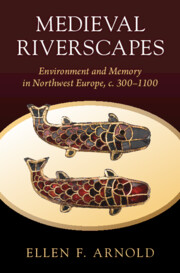Book contents
- Medieval Riverscapes
- Studies in Environment and History
- Medieval Riverscapes
- Copyright page
- Dedication
- Contents
- Figures
- Maps
- Tables
- Acknowledgements
- Preface
- Introduction
- 200–450: Late Antique Gaul
- 1 Poetries of Place
- 450–750: The Merovingians
- 2 Rivers of Risk
- 3 River Resources
- 750–950: The Carolingians
- 4 Rivers and Memory
- 950–1050: The Year 1000 Question
- 5 Ruptured Rivers
- 6 Meanderings
- 1050–1250: A New World?
- 7 The Same River Twice
- Bibliography
- Index
- Studies in Environment and History
4 - Rivers and Memory
Published online by Cambridge University Press: 15 March 2024
- Medieval Riverscapes
- Studies in Environment and History
- Medieval Riverscapes
- Copyright page
- Dedication
- Contents
- Figures
- Maps
- Tables
- Acknowledgements
- Preface
- Introduction
- 200–450: Late Antique Gaul
- 1 Poetries of Place
- 450–750: The Merovingians
- 2 Rivers of Risk
- 3 River Resources
- 750–950: The Carolingians
- 4 Rivers and Memory
- 950–1050: The Year 1000 Question
- 5 Ruptured Rivers
- 6 Meanderings
- 1050–1250: A New World?
- 7 The Same River Twice
- Bibliography
- Index
- Studies in Environment and History
Summary
This chapter uses medieval chronicles and annals to explore how river disasters were understood and remembered, and how people chose to tell stories about rivers. A focus on floods brings up issues of risk and resilience, and how floods were interpreted by medieval people. The chapter also focuses on how rivers are connected to other memorable and historic events and why they were such powerful stories. The chapter then turns to the ways that rivers were incorporated into monastic memory and to stories of foundation, and how holy sites were seen as revealed by God and the saints. The chapter ends with a case study focused on St. Sturm and the monastery of Fulda, with a focus on the role of rivers in the house’s history.
Keywords
- Type
- Chapter
- Information
- Medieval RiverscapesEnvironment and Memory in Northwest Europe, c. 300–1100, pp. 140 - 172Publisher: Cambridge University PressPrint publication year: 2024

